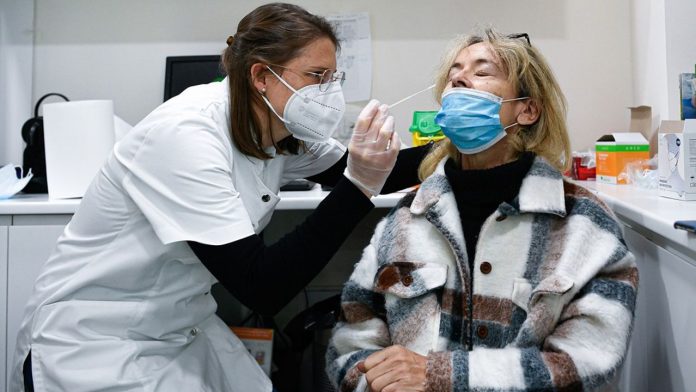Posted Sep 30, 2022 11:43 AM
France is currently going through a new wave of Covid-19 contamination. The traffic “remains intense” on almost all of the metropolitan territory, notes Public Health France (SPF) in its last weekly update, broadcast this Friday.
Almost all the indicators are up. If the increase in the number of cases is however less marked than the previous week, caution is still required on the scale of this eighth wave.
For the third consecutive week, the incidence rate is increasing. It now reaches 358 cases per 100,000 inhabitants, between September 19 and 25, against 294 confirmed cases per 100,000 inhabitants the previous week, an increase of 22%. However, this increase is less marked than the previous week, during which the incidence rate increased by 57%.
The rate of reproduction of the virus – the “R” – has decreased a little, a sign that the epidemic is progressing more slowly. It stands at 1.26, against 1.37 the previous week. However, it remains well above 1. As a reminder, an R greater than 1 means that an affected person in turn infects more than one, and therefore that the epidemic is progressing.
Increase in hospital indicators
In detail, the incidence rate increases in all age groups, except in those under 10 years old. The increase is greater in the elderly. The increase in the incidence rate was thus greater than or equal to 50% in the over 80s.
Another indicator, the positivity rate increased slightly (21%, +0.9 points). However, it is progressing less rapidly than the number of people who tested positive. Thursday, 51,366 positive cases were identified in 24 hours, up 34% from the previous Thursday. The rolling average reaches almost 42,000 positive cases per day, also increasing by 34% over one week.
For health authorities, vigilance remains in order as hospital indicators are on the rise again for the second week in a row. New hospitalizations of Covid patients increased by 21% over one week. New critical care admissions increase by 16% and the number of deaths by 5%.
Insufficient second booster doses
In this context, “compliance with measures is essential to protect the elderly”, notes Public Health France. Respect for barrier gestures and the importance of being up to date with your vaccinations are highlighted. But the number of elderly people who have received a second vaccine booster remains insufficient, points out SPF.
As of September 26, only 34.8% of 60-79 year olds eligible for the second booster dose had been vaccinated, and 48.3% of those aged 80 and over. Residents in Ehpad were, for their part, 53.1% to have received a second booster injection.
Public Health France also warns of the arrival of the “autumn season, conducive to the circulation of other respiratory viruses”, such as influenza or bronchiolitis. Moreover, France is in a context where time has passed since the injection of a last dose of vaccine. A new vaccination campaign will begin on October 3 for frail people, the over 60s, health professionals and people in contact with frail people. The vaccines administered will be adapted to the Omicron variant.













